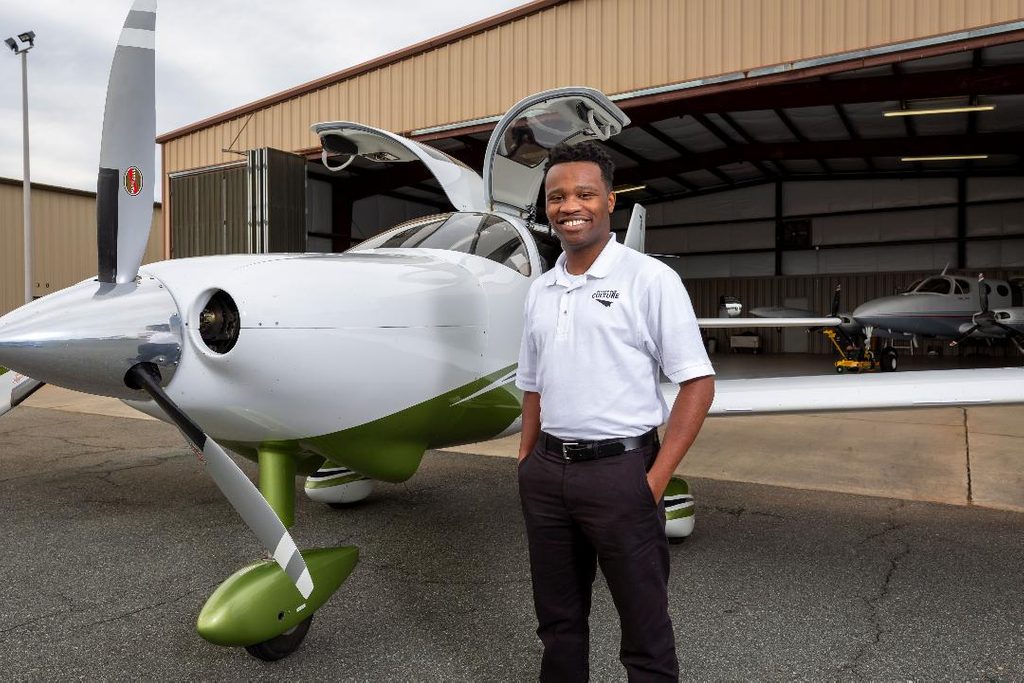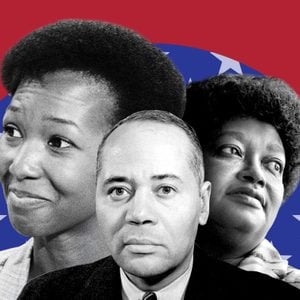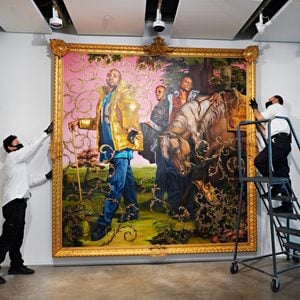What It’s Like Being One of the Few Black Pilots in the World
Updated: Apr. 26, 2021

As one of a few Black pilots, Courtland Savage understands that with access comes responsibility.
For Courtland Savage, 29, being one of the few Black pilots in the world is both a privilege and responsibility that he does not take for granted.
As founder of Fly For The Culture, an organization “promoting diversity and inclusion in the aviation industry,” Savage doesn’t just embrace the notion of representation, he has committed a part of his life’s work to making sure that others are also afforded the opportunity to reach for their dreams in the world of aviation. Through Fly For the Culture, Savage has been able to partner with organizations such as Columbia Training Centers, formerly known as HJ Aviation. The school is named after Columbia Air Center, an airport in Croom, Maryland, founded in 1941 by Black pilots who were not allowed to use other airports.
Savage’s own path to becoming a pilot was inspired by the inauguration of Barack Obama as president of the United States back in 2009. Seeing the first-ever Black man take the oath of office to become the leader of this country made a visual imprint in Savage’s mind of what could be possible. While diversity in the field of aviation is still lacking—according to the U.S. Bureau of Labor Statistics, in the United States, 93.7 percent of professional pilots are White (and 92.5 percent of professional pilots are male)—things are slowly changing. In a recent conversation with Reader’s Digest, Savage shared his journey and how he’s paving the way for others.
Discover 35 Black Americans you didn’t learn about in history class.
Motivated by a new president
Savage didn’t always dream of being a pilot, in fact, it almost started as a joke. “In 2008, I was about to graduate high school and was looking at what I wanted to do in life,” Savage recalls. “One day, I was just joking with my friends and I said, ‘If a Black man becomes president, I’m going to fly a plane.’ That’s just how farfetched I felt it was.” Then, sure enough, President Barack Obama was elected.” It was in that moment after Obama won the presidency that Savage’s perception of the limitless possibilities for his future as a young Black man in America shifted. “I went ahead and took an introductory flight class at a local flight school, and fell in love with it.”
On the path to making his dreams a reality
Savage grew up in a middle-class family with two parents who not only supported his endeavors but also co-signed for his pilot loan to start his initial flight training to get his private pilot license. However, to continue his education without putting a financial burden on his parents or himself, Savage chose to enlist in the Air Force where he worked on airplanes at one point as crew chief on a C17 Globe Master in Charleston, South Carolina. After his time in the Air Force, Savage earned his college degree, a B.S. of Science and Aeronautics from Embry-Riddle Aeronautical University in Daytona Beach, Florida and has moved on to become a pilot with a regional airline. When looking back on some of his early aviation experiences, Savage shares, “I did not feel a part of the aviation culture initially. It felt like a White fraternity, that I was not welcome in.”
A lack of diversity in the world of aviation
Only 2 or 3 percent of airline pilots are Black, and that percentage is even lower in the military. At times, Savage says being the only Black pilot can be uncomfortable.”There are a lot of mental barriers that you have to overcome when you are the only African-American at an entire airport. It’s basically a once-in-a-lifetime opportunity that you’ll ever fly on an airplane with two black pilots at the controls—That’s how few Black pilots there are.” Savage doesn’t take his experiences lightly and is well aware of how rarified his experience is. He’s also well aware of the perceptions and realities that people have that prevent them from pursuing the career of a pilot. “I think the number one misconception is that flying a plane is only for wealthy, White men.”
Fly for the Culture, an organization with a purpose
Savage created Fly for The Culture, so that seeing Black pilots would, in fact, become the norm. The 501c3 nonprofit organization headquartered near Charlotte, North Carolina, provides free introductory flight lessons to aspiring pilots of color. During the 10 to 30 minute flight, with a certified flight instructor, a young participant actually takes control of the airplane to fly it for a moment.
“When you’re in the air, everything that’s on the ground: all your problems, all the issues, politics, racism, discrimination, it’s not up there,” Savage says. “You get to escape all that is going on in this world. It’s the one time that you can really relax, and see the world from a different perspective.” It’s that joy and love of being in the air that Savage hopes to pass on to the next generation.
Looking to the past to propel his future
People in communities of African descent have an adage, “We all stand on the shoulders of our ancestors,” and Savage understands this very well. When most people think of Black pilots, they tend to think of Tuskegee Airmen or Bessie Coleman. But the person who inspired Savage the most is Jesse Brown, the first Black Navy pilot, though unfortunately, we’re still facing many of the obstacles that Brown faced. “A lot of things have changed, but many things have not changed in the aviation industry or in many Black communities as well.” But with everything taking place in America today, Savage believes a shift is happening. “People are actually starting to pay more attention to Black lives and realizing that we actually do matter.” Savage is making it his life’s mission to see that carried over into the air as well as the ground.
Next, read on to learn these facts about Black history month you didn’t learn in school.
For more on this important issue, see our guide to the Fight Against Racism.
Sources:
- Fly For The Culture
- US Bureau of Labor Statistics: “Labor Force Statistics from the Current Population Survey”



